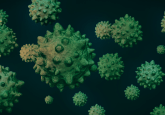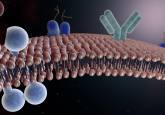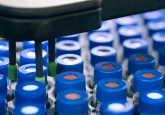Navigating the nuances

In his latest column, ‘Navigating the nuances’, Robert MacNeill (Pharmaron; PA, USA) highlights the shift towards greater detail capture within the bioanalytical field and the particular intricacies that, without modern testing practices, would have previously gone unrecorded.
 Robert MacNeill received his BSc Honors in Chemistry from Heriot-Watt University and then his MSc in Analytical Chemistry from the University of Huddersfield, both in the UK. Robert is also a Chartered Chemist and a Fellow of the Royal Society of Chemistry. With decades of experience in all aspects of quantitative bioanalytical LC–MS method development, many of these years heading bioanalytical method development activities in the CRO domain, and a regular author and speaker, Robert is a recognized expert and innovator in the field.
Robert MacNeill received his BSc Honors in Chemistry from Heriot-Watt University and then his MSc in Analytical Chemistry from the University of Huddersfield, both in the UK. Robert is also a Chartered Chemist and a Fellow of the Royal Society of Chemistry. With decades of experience in all aspects of quantitative bioanalytical LC–MS method development, many of these years heading bioanalytical method development activities in the CRO domain, and a regular author and speaker, Robert is a recognized expert and innovator in the field.
In his current role, Robert is Director of Bioanalysis at Pharmaron in Exton, PA, USA. In addition to directorship duties, he coordinates the bulk of LC–MS method development, also keeps abreast of innovation and technological development in the industry, leading in-house research projects and managing the associated technical writing.
There was a time, I am confident, when many of us in the bioanalytical community would be a little too ready to bypass seemingly mundane, unnecessary, small details in a bioanalytical method description or report. It could be seen as artifactual to the simple, physicochemically predictable and mostly forgiving small molecules that were dealt with almost exclusively for so long.
Underlined by the gradual introduction of the various, more complex biological modalities in the modern therapeutic domain, in conjunction with rolling out some great tests like incurred sample reanalysis, it has become clear that the more details recorded, the better. All the nuances, as I like to refer to them. They can certainly be of profound importance to a method’s performance and integrity. The anecdotes going through countless fascinating analytical adventures, quantitative quandaries and measurement malarkeys tell the overall tale.
I recall an enlightening occasion in my very early days in the bioanalytical lab. No, not the chance discovery of per aqueous retention in a solid-phase extraction context, which I couldn’t explain at the time while observing it clean up startlingly well. It was a method in which my co-workers and I found that by leaving a prepared plate capped and refrigerated for 24 hours, the subsequent analysis had consistently higher performance in terms of accuracy and precision than the analysis right away after preparation. It induced the familiar jubilant head-scratching in which we would contemplate effects like more chance of solubilization in the generous timescale, even going sub-ambient, but the key aspect was more likely something along the lines of allowing partially solubilized interferences to fall out of solution upon the same excursion to lower temperature. This, to me, is a methodological nuance of importance. Not often seen in a method SOP to be sure, but real nonetheless. Furthermore, I am sure that just about every seasoned bioanalytical scientist will have stories like this to tell.
As alluded to above, and touched on in previous articles, biologics such as large peptides have a pronounced tendency to thrust to the fore the potential issues that lead to nuances being so pivotal in nailing down a method’s performance and reliability. These issues include non-specific binding effects, intricate solubilization media preferences, charge state distributions and shifts, pH and ionic strength control, choice and grade of organic solvent and content within aqueous mixtures, the surface chemistry, the size and shape of vessels used, temperature, all of which are interlinked and interdependent. That’s not to mention the triple quadrupole mass spectrometer’s continual calibration and resolution shifting, bringing the need to frequently check and confirm the peak center-position of the monitored m/z value of all precursor and product ions for all monitored charge states, in the spirit of ‘charge state whack-a-mole’. This aspect is compounded by the reality that the more charge, the narrower the peak widths, given the concomitant reduction in peak spacing.
In a very recent peptidic application, we observed non-specific adsorption when the pH was just not quite alkaline enough in the final extract, and subsequently alleviated with a requisite additional soupçon of basic buffer. A calibration line showing analyte peak areas increasing exponentially with concentration, brought to linearity as described. In the same method, it was deduced and proven that we needed to increase an elution volume by 40% from a validated method in order to attain substantial recovery, which had been there a few months before. Difficult to explain, but recognition of all possible nuances is clearly critical to be able to maintain control of such an assay.
The little details are big news in this determining day and analytical age. Let’s embrace them along with our latest liquid-handling robotics, programable positive pressure manifolds and maximally controlled workflows! Let’s also not lose sight of the importance of proper training, expertise and application to adequately comprehend and adjust to all the relevant physicochemical dynamics and mass spectral processes to get to real grips with our challenges.
Interested in reading more of Robert MacNeill’s columns? You can find his collection here.
Disclaimer: the opinions expressed are solely my own and do not express the views or opinions of my employer.
Our expert opinion collection provides you with in-depth articles written by authors from across the field of bioanalysis. Our expert opinions are perfect for those wanting a comprehensive, written review of a topic or looking for perspective pieces from our regular contributors.
See an article that catches your eye? Read any of our articles below for free.






